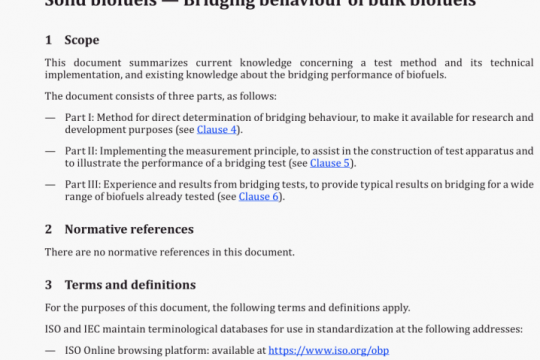ISO 22140 pdf free download
ISO 22140-2021 pdf free download.Passenger cars – Validation of vehicle dynamics simulation – Lateral transient response test methods.
6 Simulation tool requirements
6.1 General
The simulation tool used to predict behaviour ot a vehicle oi interest shall inciuoe a marnematical moaei capable of calculating variables of interest (see Clause 5) for the test procedures being simulated. In this document, the mathematical model is used to simulate an open-loop test series as specified in ISO 7401 and provide calculated values of the characteristic variables and functions of interest.
The simulation tool shall be able to cover the lateral acceleration level of time domain tests where lateral acceleration value starts from the nominal value of 4,0 m/s2
The procedure for obtaining input data from experiments may differ for simulation tools, however, the input data shall not be manipulated for better correlation. Nonetheless, adaptation of input data to actual testing conditions such as road friction should be allowed.
6.2 Mass and Inertia
The mathematical model should include all masses, such as the chassis, engine, payloads, unsprung masses, etc. The value of the mass, the location of the centre of mass, and moments and products of inertia are essential properties of the vehicle for the tests covered in this document.
Vehicles with significant torsional frame compliance require a more detailed representation that includes frame-twist effects that occur In extreme manoeuvres.
6.3 Tires
The vertical, lateral, and longitudinal forces and aligning and overturning moments where each tire contacts the ground provide the main actions on the vehicle. The fidelity of the prediction of vehicle movement depends on the fidelity of the calculated tire forces and moments. Differences between the tire force and moment measurements used for the model and those used in vehicle testing can be expected due to different wear and aging histories. Although it is difficult to account for these differences, it is important to acknowledge and understand them.
Large lateral slip angles and camber angles can occur under the conditions covered in this document. The tire model shall cover the entire range of slip (lateral and longitudinal), inclination angle relative to the ground, and load that occur in the tests being simulated. The tire lateral force reduction at high slip angles is a critical characteristic that shall be comprehended by the tire testing and modelling. The effect of combined tire lateral and longitudinal slip on forces and moments shall also be modelled.
The surface friction coefficient between the tire and ground is an important property for the limit friction conditions that can be encountered in tests.
The siniulated tests take place on a flat homogenous surface; detailed tire models that handle uneven surfaces are not needed. lithe test surface has inclination for water drainage, this should be included in the simulation.
6.4 Suspensions
The properties of the suspensions that determine how the tire is geometrically located, oriented, and loaded against the ground shall be represented properly in order for the tire model to generate the correct tire forces and moments. The suspension properties also determine how active and reactive forces and moments from the tires are transferred to the sprung mass.
The suspension properties should include change of location and orientation of the wheel due to suspension vertical deflection, steering, and compliance due to applied load as would be measured in a physical system in kinematics and compliance (K&C) tests.
The model shall cover the full nonlinear range encountered in the tests for springs, jounce and rebound bumpers, and auxiliary roll moments due to anti-roll bars and other sources of roll stiffness.
Rate-dependent forces such as shock absorbers are significant and shall cover the range of suspension jounce and rebound rate encountered in the tests.
6.5 Steering system
The steering system interacts with the suspensions to determine how the tire is oriented on the ground.
The test requires that either a robot or driver provides steering wheel control. The model should include kinematical and compliance relationships needed to calculate the road wheel angles from the steering- wheel angle.
The model should include the effects of active control systems, if applicable in the test.
If a robot controller provides the steering, the model does not need to predict the associated steering- wheel torque for this document. However, it should be recognized that inadequate steering robot torque capacity can result in steering inputs that do not match the intended angle. This can be a source of discrepancy between simulation and test results.
6.6 Aerodynamics
The model should include aerodynamic effects that influence tire load and overall vehicle drag for speeds up to 120 km/h.
6.7 Brake system
If the brakes are not engaged during the testing, then the brake system is not needed. However, it an active controller engages that uses the brakes to control the vehicle during the test covered in this document (see 6.9), then the vehicle brake model shall include the actuators and response properties that affect the controlled vehicle response.ISO 22140 pdf download.




